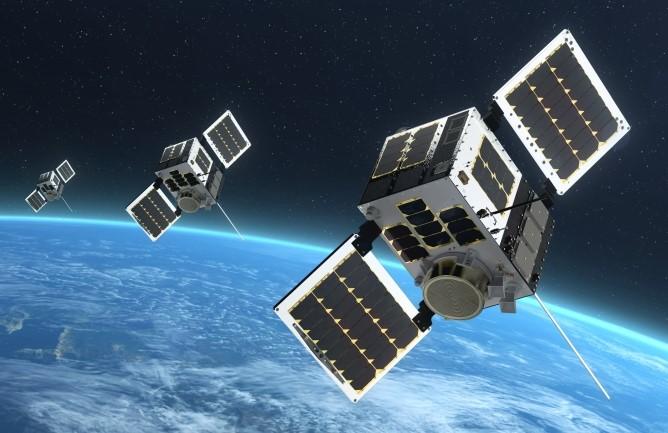
HawkEye 360 and Kleos Space, operators of space-based radio frequency monitoring services, on April 1 launched two new batches of satellites into space aboard a SpaceX Falcon 9 rocket that took off from Cape Canaveral.
Both operators are expanding their constellations of satellites on orbit to 12—a number they say will improve the performance of their radio frequency monitoring services. The HawkEye 360 and Kleos Space satellites were among 40 that shared a ride to low Earth orbit aboard the SpaceX Transporter-4 rideshare mission.
The companies sell radio frequency monitoring data for a variety of purposes, including to governments who are looking to track ships that might be fishing illegally or trying to evade sanctions.
For its part, HawkEye 360 had three satellites carried into space aboard the Falcon 9 rocket, it said April 1. The company says it established communication between its trio of satellites and ground control and was working to commission the satellites.
HawkEye 360’s Cluster 4 satellites are scheduled to achieve initial operating capability in June and join the nine satellites it already has in orbit.
“The newly designed satellites include enhanced antenna functions which allow greater flexibility in detecting and geolocating signals across a wide range of frequencies important to our customers,” the company said.
HawkEye 360 says it plans to launch Cluster 5 in June. “Together, Cluster 4 and the soon-to-launch Cluster 5 will double HawkEye 360’s on-orbit capacity and significantly expand its collection across the [radio frequency] spectrum,” the company said.
Two more fully funded clusters are scheduled for launch in 2022, the company added.
“These clusters will enable the constellation to have a global revisit rate of less than one hour,” HawkEye 360 says. “This revisit rate is key to further enhancing our ability to monitor global activities and support timely defense, national security and commercial applications.”
Kleos Space launched four satellites on the Falcon 9 rocket. It has yet to say whether it had established connection with the satellites.
“The four Patrol Mission satellites, flown in formation, will significantly increase Kleos’ global data collection capability by an additional 119 million km² per day and improve the average daily revisit rate over a 15-degree latitude area of interest to around five times a day,” the company said April 1.
The company aims to build a constellation of up to 20 satellite clusters. Its fourth cluster, the Observer Mission, is scheduled to launch in mid-2022.





